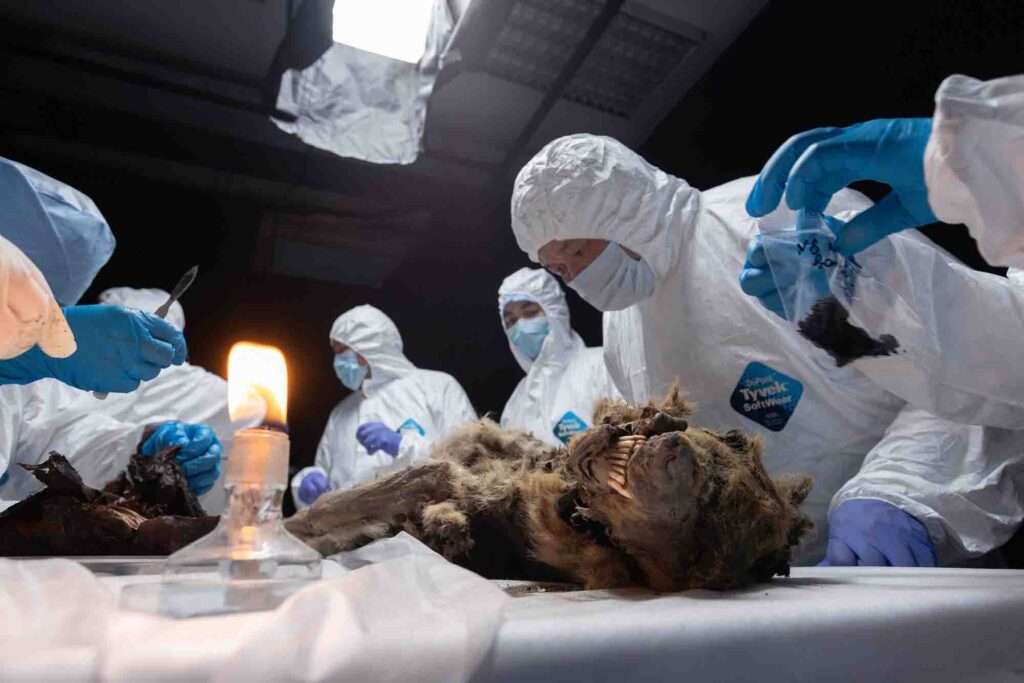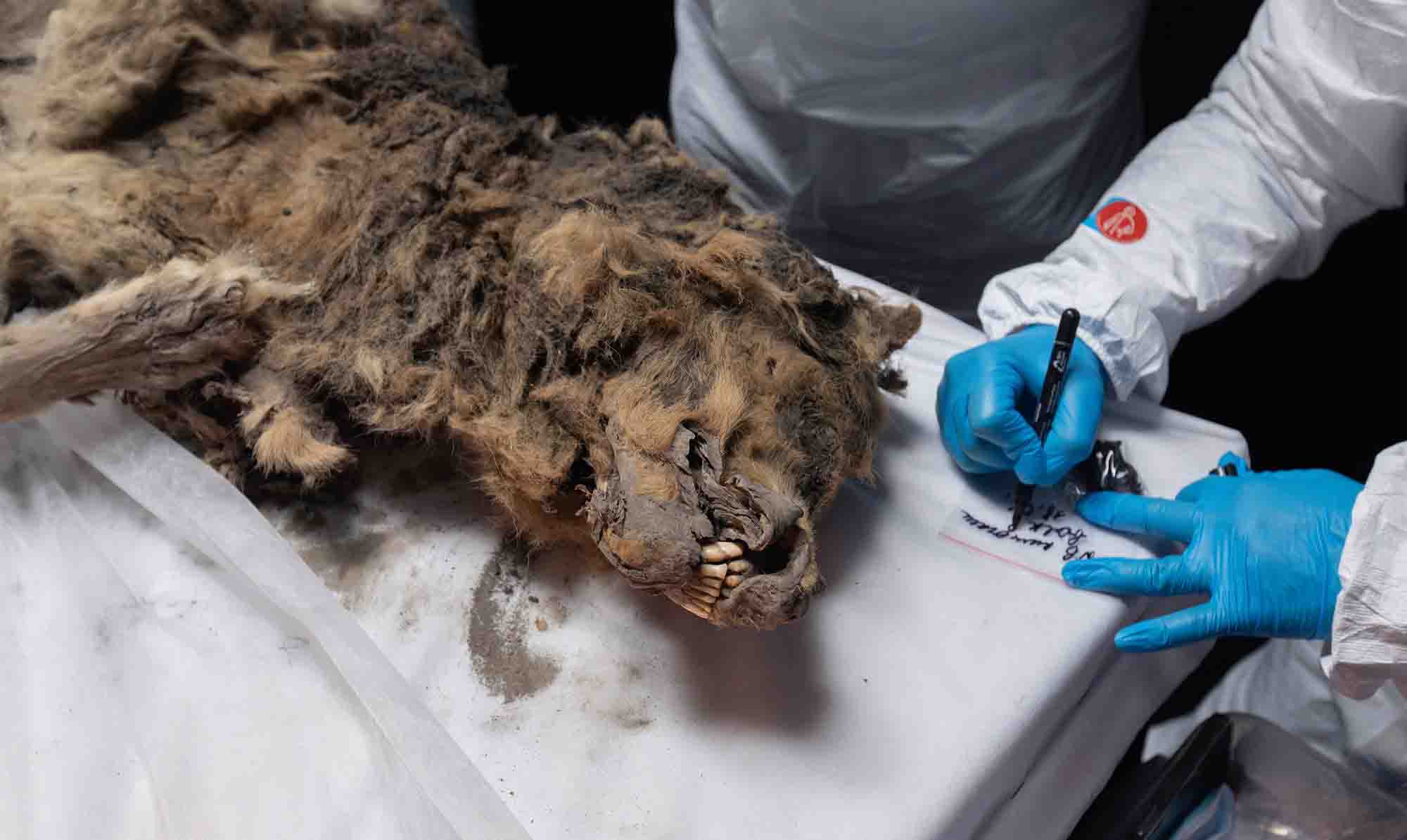A “unique” mummified wolf that died 44,000 years ago has been unearthed with its fur and teeth perfectly preserved from a Russian ice field.
The ancient predator was discovered 120ft under the permafrost beside the Tirekhtyakh River near Yakutzk in 2021.
Scientists from the Mammoth Museum laboratory of the North-Eastern Federal University, or NEFU, are now studying the modern-looking corpse to see how it lived.
Photos of a preliminary autopsy show how the wolf’s thick coat, needed to survive an ongoing Ice Age, is still completely intact.
At the time its species would have been hunted by Neanderthals in the Late Pleistocene era.

And one tooth from a terrifying mouthful has shown that the wolf was a male adult in its prime, say scientists.
Samples taken from its stomach, say experts, will show what it ate and even what its victims ate too.
Scientists will also compare its ancient genome to modern-day wolves to establish how much the species has changed.
Yakutia Academy of Sciences’ Mammoth Fauna Study Department head Albert Protopopov said in a statement obtained by Newsflash on 19th June: “The wolf’s stomach is well-preserved and uncontaminated, presenting a unique opportunity to obtain a snapshot of the ancient Pleistocene biota.
“This was a large and active predator, and we have a chance to learn about its diet and also about the diet of its prey.”

Maxim Cheprasov, head of the Mammoth Museum Laboratory at NEFU, added: “We took a premolar tooth to determine the biological age of the find.
“From the wear on the teeth and the development of the sagittal crest, we can already tell it was an adult male.”
Now, scientists are also hoping to find live bacteria in the wolf’s stomach that might have survived being frozen.
Professor Artemy Goncharov, head of the laboratory of functional genomics and proteomics at the Institute of Experimental Medicine, added: “We found that live bacteria can survive in fossilised animal remains for millennia, serving as witnesses to ancient times.
“We hope to achieve good results that will advance our understanding of ancient microbial communities, their functions, and the presence of pathogenic bacteria.
“We may discover microorganisms useful in medicine and biotechnology as producers of biologically active substances.
“Thus, these studies have significant implications for the future.”

To find out more about the author, editor or agency that supplied this story – please click below.
Story By: Simona Kitanovska, Sub-Editor: Simona Kitanovska, Agency: Newsflash
The Ananova page is created by and dedicated to professional, independent freelance journalists. It is a place for us to showcase our work. When our news is sold to our media partners, we will include the link here.




